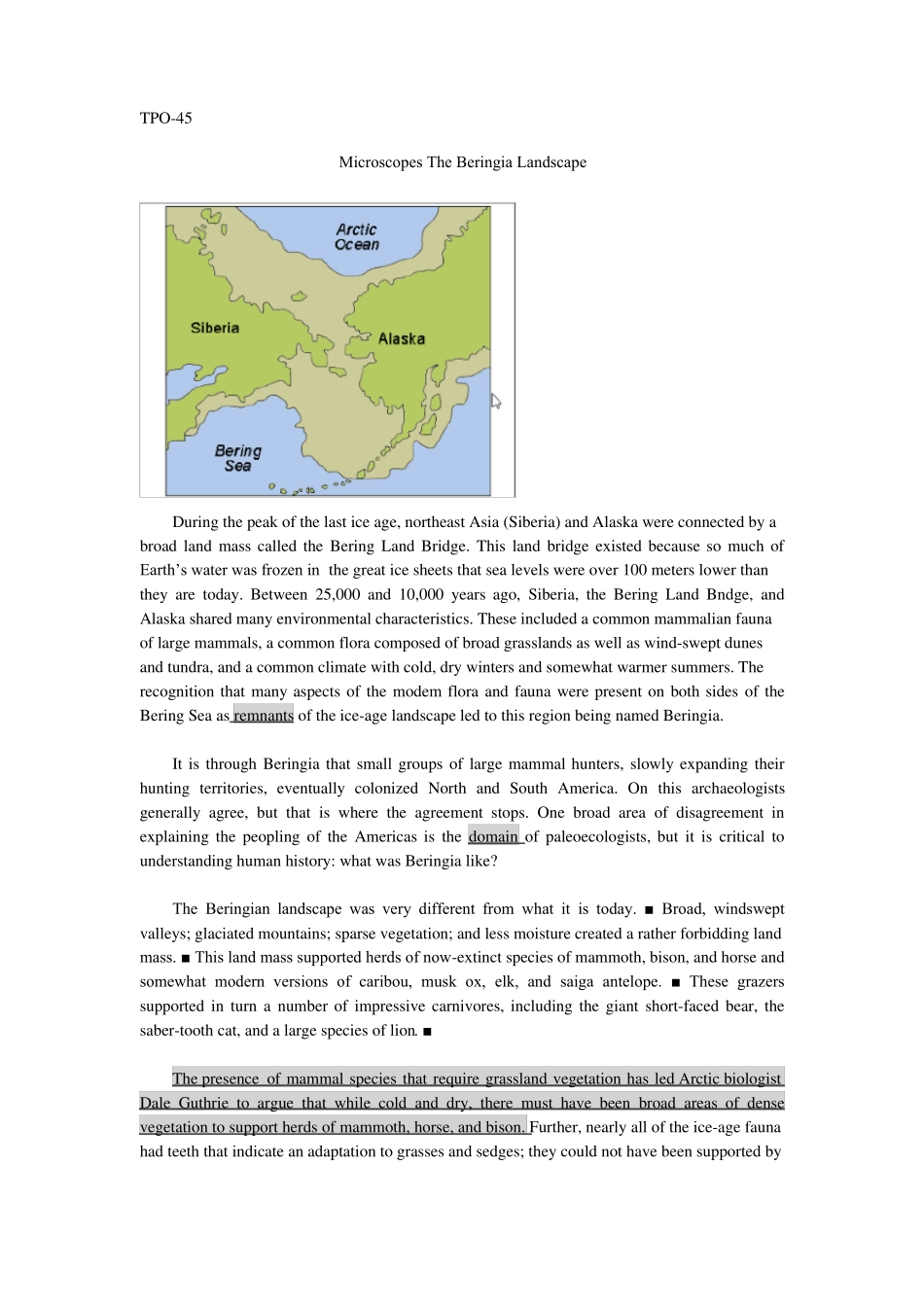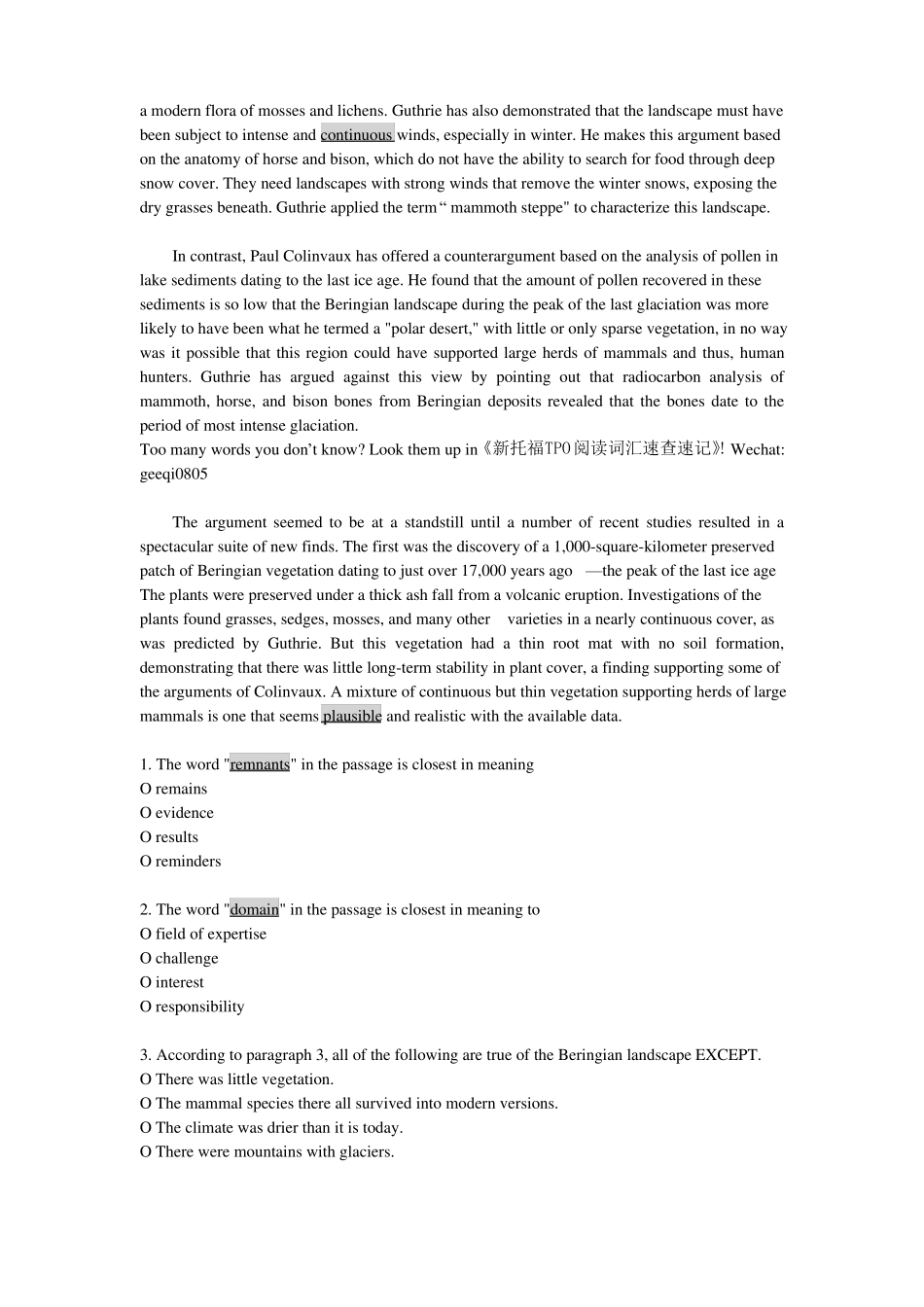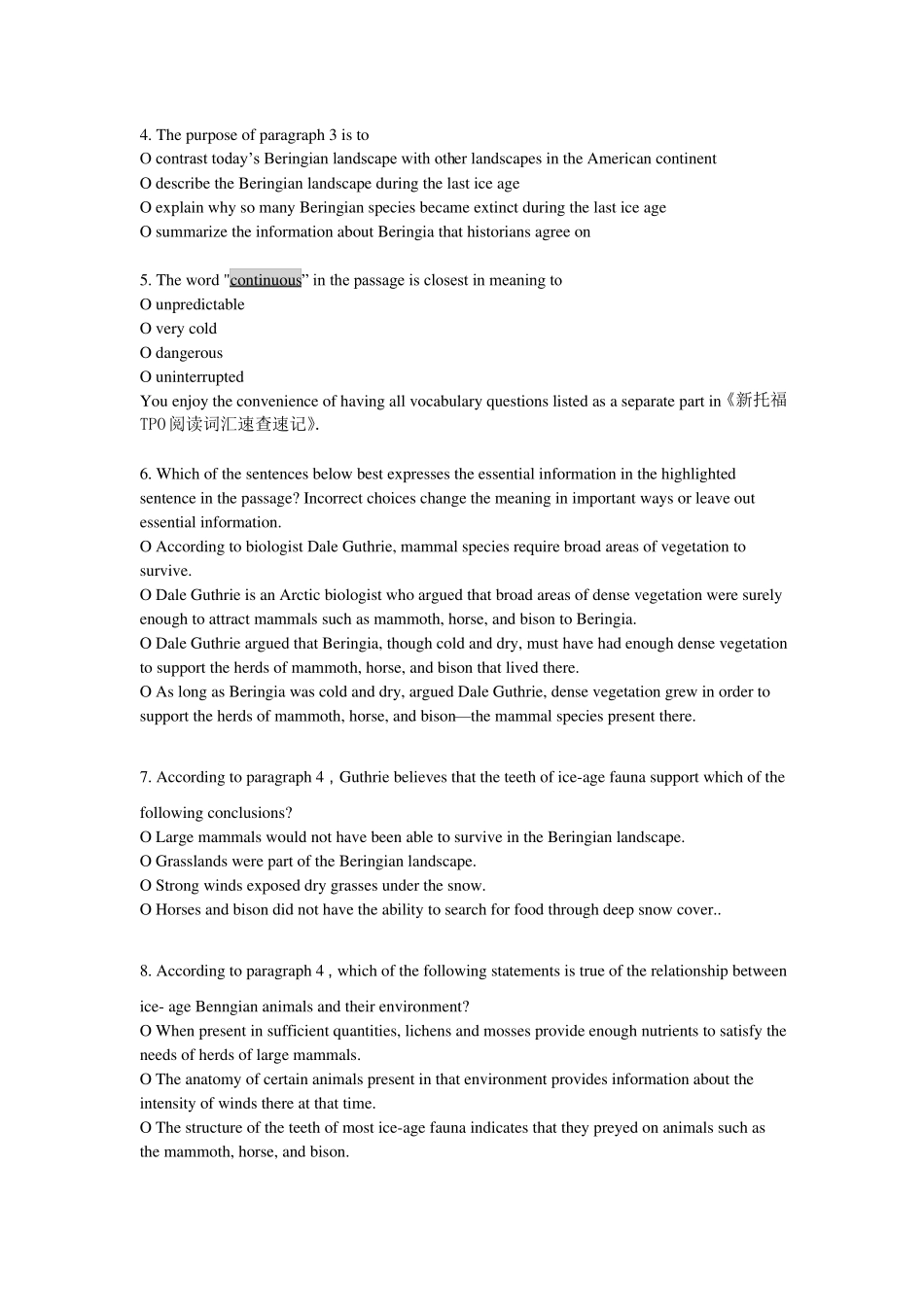TPO-45Microscopes The Beringia LandscapeDuring the peak of the last ice age, northeast Asia (Siberia) and Alaska were connected by abroad land mass called the Bering Land Bridge. This land bridge existed because so much ofEarth’s water was frozen in the great ice sheets that sea levels were over 100 meters lower thanthey are today. Between 25,000 and 10,000 years ago, Siberia, the Bering Land Bndge, andAlaska shared many environmental characteristics. These included a common mammalian faunaof large mammals, a common flora composed of broad grasslands as well as wind-swept dunesand tundra, and a common climate with cold, dry winters and somewhat warmer summers. Therecognition that many aspects of the modem flora and fauna were present on both sides of theBering Sea as remnants of the ice-age landscape led to this region being named Beringia.It is through Beringia that small groups of large mammal hunters, slowly expanding theirhunting territories, eventually colonized North and South America. On this archaeologistsgenerally agree, but that is where the agreement stops. One broad area of disagreement inexplaining the peopling of the Americas is the domain of paleoecologists, but it is critical tounderstanding human history: what was Beringia like?The Beringian landscape was very different from what it is today. ■ Broad, windsweptvalleys; glaciated mountains; sparse vegetation; and less moisture created a rather forbidding landmass. ■ This land mass supported herds of now-extinct species of mammoth, bison, and horse andsomewhat modern versions of caribou, musk ox, elk, and saiga antelope. ■ These grazerssupported in turn a number of impressive carnivores, including the giant short-faced bear, thesaber-tooth c...


